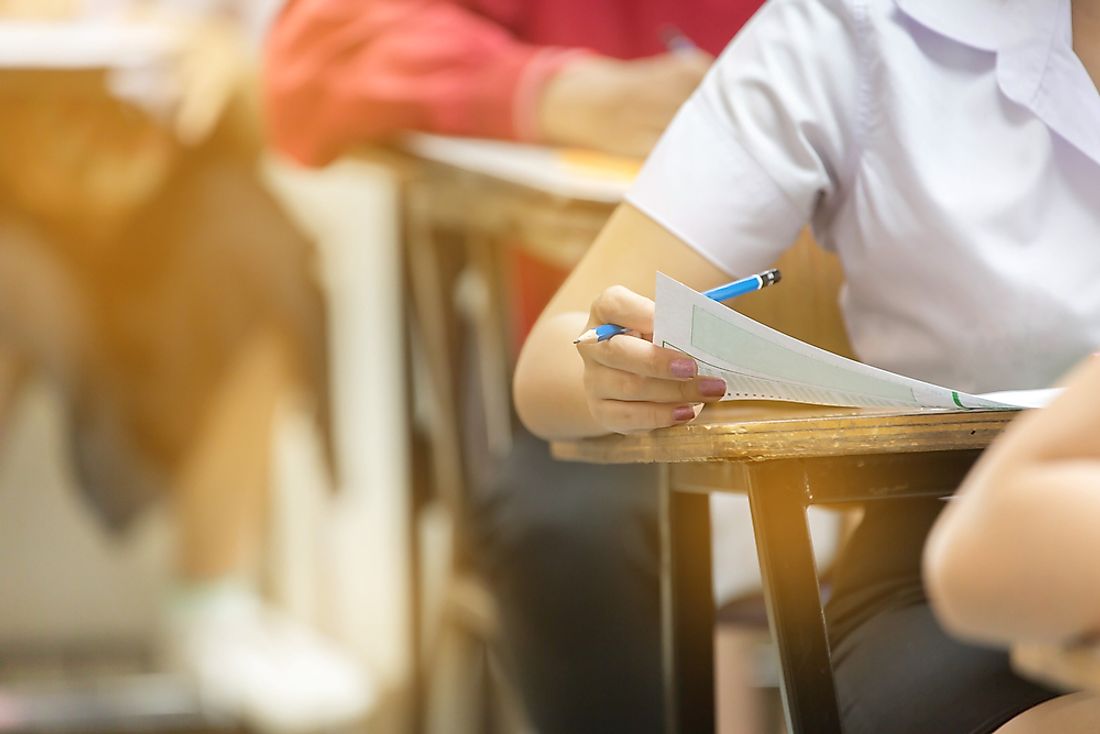Countries With the Highest High School Graduate Rates

Some of the countries with the highest rates of high school graduation in the world are among the most developed in the globe. Some of the things that increase the chances of high school graduation include the presence of well-established policies on education and strong economies translating to more resources for the education sector. Other factors include smaller populations, which equate to a low teacher to student ratio, as well as educations systems that keep learners in compulsory school for longer. Below is a selection of some of the countries with the highest high school graduation rates.
Countries With the Highest Graduation Rates
Japan
Japan has a population of around 127 million people, which makes it incredible that the country has a literacy rate of almost 100%. The country has an intense focus on education, which begins as soon as a child turns six. At the elementary and lower secondary school levels, the law states that it is mandatory for every child to attend school. Most children attend public schools although private schools are available, especially at the upper secondary and tertiary levels.
Among OECD countries, Japanese students usually rank the highest in subjects like math, sciences, and reading literacy. The education sector in Japan is better than that of most countries in the OECD despite the country’s expenditure being below the OECD average. The economy of the country demands a workforce that has a high quality of education to run the highly technological and scientific economy.
Historically, education has proven to be an important cog in the nation’s economy. For example, in the years after World War II, the recovery and meteoric rise of the country’s economy can be attributed to education. However, the education system has been the subject of many critics who perceive it as being too rigid and the source of too much pressure for students.
South Korea
South Korea’s system is standardized as much as, if not more, than Japan’s system above. Unlike Japan, both private and public schools receive financial aid from the government although public schools receive more funding. In fact, the country spends about 4.7% of its gross domestic product on education, which is around the OECD average spending. Among the OECD nations, South Korea also has some of the highest figures for sciences, math, and reading literacy, which translates to a high rate of literacy (about 99.9%). For example, a ranking on the performance of students in math and sciences in 2014 by the OECD, South Korea emerged second.
Looking at high school life, it is evident that high school students work more than their counterparts do in other countries. As they move closer to graduation, these students study for longer hours in order to get sufficient grades for top universities. A typical schedule of a high school student starts at 5 am in the morning and spends the day in school until 4 pm. After that, students usually have a period of self-study (called Yaja) in the evening until 10 or 11 pm. After Yaja, they may even attend specialty schools until 2 am.
The United Kingdom
With a population of around 64 million people, about 99.9% of the youth aged at least 25 years in the UK have a secondary education. Every child is required by the law to attend primary and secondary school between the ages of 5 and 16. After that, education is optional and a student is free to advance their studies or go to a vocational school.
For each of the countries making up the United Kingdom, education is a devolved matter. However, one of the things that explain the overall success of the countries is the high amount of expenditure that goes into education. In 2015/16, the countries had a combined spending of a whopping £83.4 billion ($106.6 billion) on all stages of education with high schools getting the biggest share at £38.2 billion ($48.8 billion).
Armenia
At some point in Armenia’s history, in the early stages of the 1960s, the country had a 100% literacy rate. The culture and the government places a high emphasis on education, which is why primary and secondary school education is completely free. In addition, the government has made it compulsory for everyone to complete high school. Unfortunately, this high rate of literacy has its drawbacks. Studies conducted by UNICEF show that there has been an increase in the number of school dropouts due to a low quality of education and child labor. The studies showed that the rates of school dropouts increased to 250% every year between 2002 and 2005. To put this into figures, about 1,531 students dropped out between 2002 and 2003 while a whopping 7,630 students dropped out between 2004 and 2005.
Countries By High School Graduation Rates
| Rank | Country | Graduation Rate (%) |
|---|---|---|
| 1 | South Korea | 99 |
| 2 | Georgia | 96 |
| 3 | Japan | 95 |
| 4 | Croatia | 95 |
| 5 | Ukraine | 95 |
| 6 | United Kingdom | 94 |
| 7 | Armenia | 93 |
| 8 | Kazakhstan | 93 |
| 9 | Slovakia | 93 |
| 10 | Cyprus | 93 |
| 11 | Sweden | 92 |
| 12 | United States | 92 |
| 13 | Greece | 92 |
| 14 | Lithuania | 91 |
| 15 | Czech Republic | 90 |











